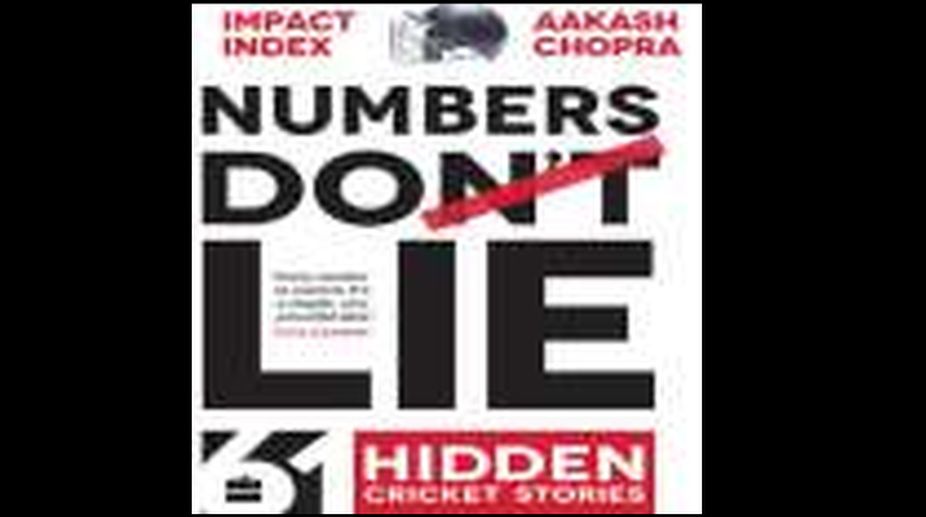The cover has a diagonally rising red line cutting out the nt. I couldnt quite come to terms, writes Aakash Chopra in the foreword, with how completely we relied on the scoreboard to make sense of an innings or a players game. Are we all similarly reliant on it? If the answer is in the affirmative, our predecessors would appear to have been blessed with much, much greater sense. When Len Hutton scored his hundredth hundred, RC RobertsonGlasgow, no mean cricketer himself, reminded him that there were others, illustrious ones, who were not among those who had done so. Two of those outside the elite club were KS Ranjitsinhji and Victor Trumper, and the central point, as it appeared to RobertsonGlasgow, was this: In the judging of art, quantity is not of the first relevance; and, when we look up at the stars in the sky, it is not of their size that we are thinking.
The great writer went on to analyse the 13 cricketers who, by then, were similarly distinguished, pointing it out that WG Grace and Donald Bradman were only seventh and eighth on the list, and let it be known that he wanted that to be a warning to all arithmeticians. The attitude underpinning the viewpoint might explain why RobertsonGlasgow, referring to Tom Hayward, would write that there was something magnificently military in his stance and moustache. If crickets golden age is gone back to, its narrative accounts will be found full of the joy of the discovery and appreciation of beauty and the celebration of a wonderful experience, touched by the entire gamut of human emotions. But contemporary India, the hub of crickets commercial activities which sets forth the global economic agenda around the game, cannot really afford this easy insouciance. And those long-ago people actually revelled in its essence. Numbers are important to India, one way or another. One question that pops up in this context ~ given that the book seeks to reveal a lot more than the scoreboard does by factoring in details outside the statistical purview ~ is: how reliable are the records we pore over today, or dont?
Advertisement
If we care to recall, 2015-16 was a period when several books spoke of the varieties of fixing as a phenomenon that had eliminated the last vestiges of integrity from the game, what with crime syndicates remote-controlling the choreography out there in the middle. One single tournament, the Indian Premier League, has simply played havoc with game, with the pompously named cricket board of our country losing its credibility probably forever and also a president who has had to be tamed, as the last resort, legally, which might serve to show just how much lies hidden behind the scoreboard in the purely national context. But then, Twenty20 is said to have been such a bonanza for bookies the world over that crickets administrative insiders admit that even global combative efforts cannot be anything more than cosmetic. The bad guys are everywhere, always ahead of the game. And from Twenty20 to the other formats is but a small step. So small that it is barely perceptible. This is an important point because cricket, tainted with corruption and marked also by punishments imposed fitfully on wrongdoers, has not altered its record book at all, creating a bizarre situation in which crime is acknowledged, some criminals are brought to book, official anti-corruption activities are routinely stepped up but the remote-controllers legacy, the make-believe scores, are not even sought to be discarded.
It is quite likely that a summary rejection of everything in the record book will be deemed absurd, but how do you tell the dud from the real? And if you cannot, how can you go by it? Given that urban India, with no mainstream sporting glory to aspire to, cannot really think beyond what it is saddled with, cerebral exercises of the sort this book limits itself to will be our alternative truth. Is Rahul Dravid our highest-impact Test batsman? Is VVS Laxman not among our highest-impact Test batsmen? Is Sachin Tendulkar the greatest support act in the history of Test cricket? The book gives its own answers but far more rewarding subjects are Alan Davidson, as the highestimpact Test player, Trevor Goddard, as the most underrated Test player, Colin Croft, as the highest-impact West Indian bowler during his career. But you wish you did not have to read about Hansie Cronje or Danish Kaneria and a few others whose track records were not quite what their parents would be proud of. You cannot wish corruption away.
Another point. Impact is so big a word that it includes a lot of things other than performances, even if contextually evaluated, as in this book, and the nuts and bolts of these. Victory and defeat are sometimes not central to the game. JS Barker, recalling historys first tied Test, wrote that, until some minutes after the hurlyburlys end, there was the utmost confusion about the result. There were those who thought Australia had won and also others who thought the West Indies were the winners. The discovery that the match was a tie, Barker wrote, was almost a relief. I remain convinced that nobody would have been happy had either side won. Not ***as*** happy, at any rate. An entirely different kind of impact, that, but one that India might as well reckon with, given that they have been bad travellers and the way they win their home Tests on designer wickets does not really make the rest of the world defer to them.
The reviewer is Sport Editor, The Statesman
















